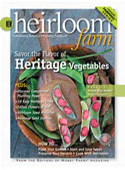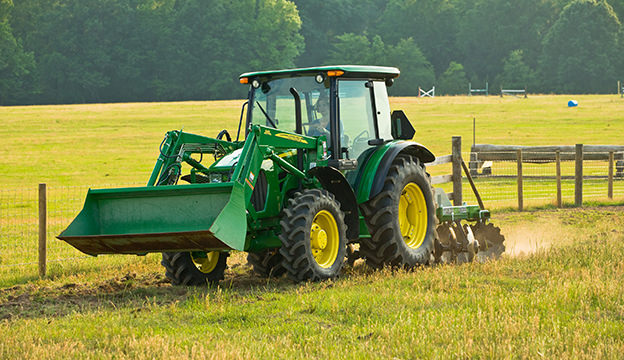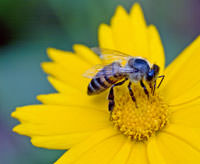Mowing 3 acres of lawn takes too long on a regular riding mower. Wheel-barrowing and spreading manure by hand becomes onerous. Moving tons of compost to the garden one bag at a time loses its appeal. And bumping down a gravel driveway that is as rutted as an old washboard gets tiring.
Let’s face it, for most of us there comes a time when increasing age and increasing chores conspire: We want a piece of machinery that will help us pull, push, dig, cut and just keep up with the myriad work our farm requires. It’s time to start shopping for a tractor.
Types of Tractors
Before heading out to your local dealership, it’s a good idea to know your basic options and which would best suit your farm. Here are the main tractor categories.
Lawn and Garden Tractors
These are light-duty tractors that range from about 10 to 25 hp. They are relatively slow, and most use gasoline, though a few offer diesel engines. They are suitable for mowing grass on 1 to 2 acres. They can also tow light loads and might be suitable for operating small ground-driven implements, but few have a three-point hitch or power take-off (PTO) needed for larger machines. The price range is anywhere from $1,500 to $14,000, depending on the brand, size and capability of the machine, with the higher-end models offering zero-clearance turn capability.
Subcompact and Compact Tractors
These tractors are heavier duty than their lawn and garden counterparts, with engine horsepower ratings ranging from 15 to 50. The subcompacts are a relatively new product introduced by Kubota in the late 1990s, and are now offered by several other companies. They are intended for the consumer market and are designed with comfort, ease of operation and low maintenance in mind and to act as a bridge between the lawn and garden tractors and compact tractors. They can accommodate all kinds of implements and have a two-speed transmission. Compacts, also called estate tractors, are versatile and, at the top-end, might be appropriate for baling hay with a small square baler on small acreage.
Most models of subcompact and compact tractors are available in diesel and offer four-wheel drive (making them good buys when operating on hills or plowing snow). They’re faster than their lawn and garden counterparts, and they can do more work: All models come with a three-point hitch and PTO, so they can operate a wide range of implements. The price range runs between $8,000 and $35,000.
Utility Tractors
These heavy-duty units are generally designed for commercial-scale farms. They all have a three-point hitch, PTO and horsepower in the 45 to 110 range. Like compact tractors, most new models are offered with diesel engines, and four-wheel drive is a readily available option.
For farms up to about 160 acres, these are the workhorse tractors that can get most jobs done. On larger commercial farms, they can even do many of the jobs that don’t require big power, like raking hay or hauling round bales to feeders. The smaller-sized units readily handle a small square baler, and the top-end models can easily operate a round baler or big square baler. The rule of thumb for pricing on these tractors is that they will start at about $300 per hp, but can jump to over $600 per hp ($13,500 to $66,000) depending on the brand and features the tractor comes equipped with.
Horsepower and Torque
Because horses provided power for pulling loaded wagons and plows long before engines were invented, early tractor manufacturers rated their products on the ability to do work that was comparable to a horse’s work; 1 horsepower was approximately equivalent to the power exerted by one horse pulling something mathematically equal to 33,000 foot-pounds per minute. Another way to think of it is that one horse could typically pull a 3,300-pound wagon a distance of 10 feet in one minute; a 10-hp lawn tractor can apply 330,000 foot-pounds of power per minute.
Torque is the measure of twist that an engine can apply to the driving wheels, or the PTO. Let’s say, for example, that you have two tractors advertised with the same horsepower, but one has higher torque: That one has an engine that runs slower to create the same amount of turning action, thereby using less energy to do the same amount of work. What this means in practical terms is that you won’t have to rev the engine as much, it’s less likely to stall when starting to work under a load, is quieter, will use fuel more efficiently and will typically last longer.
There are three different aspects of a tractor that manufacturers and dealers talk about when they discuss horsepower. The first is engine, or gross horsepower, and it represents the amount of power that the engine produces. However, the engine loses some horsepower simply through its own operation. On tractors with a PTO, the ability to operate implements is critical, so PTO horsepower, or what’s left to operate the implements after losses for engine operation, is the number that most major manufacturers report when they specify horsepower for their tractors.
The University of Nebraska’s Tractor Test Laboratory, which started in 1920, tests every new tractor sold in the United States that’s rated at 40 hp or greater to verify claims about horsepower and torque at the PTO. They also evaluate other criteria, like fuel economy and noise level. “PTO horsepower is usually about 75 to 85 percent of gross engine horsepower,” says Brent Sampson, test engineer with the University of Nebraska. “When looking at tractors, make sure you are comparing apples to apples … that you are comparing PTO horsepower to PTO horsepower, and not engine horsepower to PTO horsepower.”
The third place horsepower is rated is at the drawbar. A tractor’s ability to do tillage work, like plowing and disking, is affected by its drawbar horsepower. The actual drawbar horsepower is 75 to 85 percent of the PTO horsepower.
A tractor’s actual performance may be lower in some circumstances than its rated capability. All tractors lose some power at higher elevations; the rule of thumb is that for every 1,000 feet above sea level, there is a three percent reduction in horsepower. Tractors also lose power when operating on wet ground or on hilly terrain, and when tilling in heavy soils. Power can also be lost over time as wear and tear takes its toll on the engine, but will be worse if routine maintenance is ignored.
Make a List
Most manufacturers’ representatives recommend that before you start visiting tractor dealers, you sit down and make a list of all the work you currently do that would be made easier with a tractor, and list all the kinds of work you might undertake with a tractor.
“You really need to think about the applications you’ll use your tractor for,” says Marion Wilkins, director of business operations for Kioti. “Prepare a list, and include as much detail as possible, and specify what is ‘must-do’ work, and what is optional.”
For example think about plowing snow, hauling manure, doing building projects, and of course, cutting grass. If you plan to plow snow in your driveway with the tractor, list how long the driveway is, how many storms you have each year, the depth of an average snow and what the worst-case snowstorm might drop.
How many acres of ground will you be mowing? Will you be simply cutting the grass for keeping up a lawn, or will you be mowing for hay production? Do you plan to bale hay with your tractor, or hire someone else to actually make the bales? Are you trying to clean up a field that has a lot of brush? Do you need to clear weeds from a rough roadside ditch or around the edge of a pond?
Tom Sieper, corporate products manager for tractors and implements at Kubota, recommends that you also consider the conditions under which the tractor will operate and how it will be stored. Do you expect to work on hilly terrain? Will the tractor be operating in extreme heat or extreme cold? Will you need to drive it on a public road occasionally? Can you keep it in a fully enclosed shed, an open shed with just a roof over it, or will it be subject to the elements all the time? If it will be kept in a shed, take the measurements for clearance of the door, ceiling and walls or poles that support the building.
“A dealer of ours sold a man a tractor with a rigid ROPS [a roll-over protection structure],” Sieper says. “The man wanted to store it inside, but the shed had a 7-foot- 8-inch-tall doorway; the rigid ROPS was taller than his doorway. He had a choice: he could cut the doorway, which he naturally didn’t want to do, or he could go back and buy the optional foldable ROPS that would give him the clearance he needed, which is what he ended up doing.”
With complete information, knowledgeable tractor dealers can assess your needs and suggest products that will best suit the work you have in mind. They can recommend both tractors and implements that will do the job now, as well as meet your needs down the line.
Tractor Shopping Time
Price is obviously an important concern when it comes time to start shopping, but Dr. Dick Parish, agricultural engineer at Louisiana State University’s Hammond Research Station Agricultural Center, says it shouldn’t be the primary factor.
“Don’t base your decision entirely on price; there are some low-priced machines out there that are just not very high quality, or user-friendly,” he says. “Go with a reputable tractor manufacturer, and take your time when you’re shopping to compare between brands, between lines within the brand, and between models within the line. A tractor should last for many years, so the investment in time now can save thousands of dollars over the life of the machine.”
Jim Startz, vice president of marketing at Mahindra-USA concurs. “Tractor shoppers should really dig to find out what comes as standard equipment, and what are extras. If you just go by price, one product might look like a really good deal, but when you start comparing feature by feature, you find out that the really good deal isn’t quite so good. For example, we offer buyers the choice of ag tires, industrial tires, or turf tires, all at the same price.” Startz says that with some manufacturers, “if you want industrial or turf tires, you’ll have to pay extra.”
There are a few other things that Dr. Parish strongly recommends looking for when doing your comparison. “Even for lawn and garden tractors, power steering is worth the extra investment. Trying to turn a tractor that is working or has some weight on it with manual steering can be really difficult. For subcompact and larger tractors, look for a model that has a remote hydraulic cylinder outlet. These outlets are critical for the ability to operate many implements that come with their own hydraulic cylinder, like a box-blade that has a cylinder to set the angle, but they are not a standard feature on some tractors.”
Both Dr. Parish and Brent Sampson emphasize sizing up the model you are considering for comfort and ease of use. Check that the levers and pedals are convenient for you, and that you can easily operate them. Try several different seat types to see which is most comfortable for you. Listen to different units running to compare noise levels.
Cynthia Gigandet, marketing assistant for compact tractors at John Deere, agrees. In fact, she recommends trying the units you are considering in a real-world application. “Ask the dealer to bring a demo unit to your farm, and use the machine to perform some actual tasks. You want to make sure you’re really comfortable with the machine, and that it is going to work on your operation.”
She also stresses that safety should be an important consideration. “Look for seatbelts, ROPS (on tractors that don’t come with a cab), and operator-present protection systems, which shut the engine off if the operator is not in the seat of the tractor when it is in gear. ROPS should be certified by OSHA [the Occupational Safety & Health Administration] and/or ASAE [the American Society of Agricultural Engineers].”
The dealer should be a real asset to you—not just someone who sells you a unit today, but also someone who provides parts and service for years to come.
“Look for a dealer who has been in business for years—someone who has a track record selling tractors,” says Claudia Garber, manager of communications for Case IH. “A good dealer not only tells you about the warranty, but offers the support to provide warranty work locally.”
Garber also urges buyers to study the prices for used tractors. “If you look at what the used market is for the brands you’re thinking about, you’ll get a good feel for the quality of the machine. Brands that hold their value in the used market do so because buyers know they can count on them.”
Tractor Implements
A tractor by itself is like a foot without a shoe: It can go places, but there’s a limit to the kind of hard work it can do. Implements are the shoes—or the magic work boots. They take your tractor from being just an engine and wheels, to being the do-anything rig you dreamed of someday owning.
- Mowers: There are many kinds of mowers available, depending on your circumstances. They can be either “belly mounts” (a mid-mounted mower that sets under the center of the tractor), rear-mounted units, or “zero-turn” models that are front-mounted. Finish mowers yield a manicured look for lawns; rotary cutters are heavy-duty, and are designed to cut thick grass and brush; sickle mowers and flail mowers are typically used for cutting hay; flail mowers (often used by highway departments to keep road edges trimmed) are also used to whip weeds and grass off at a desired height.
- Tillage tools: Cultivators, tillers, discs, plows and harrows are all used to prepare seed beds in gardens or fields, and to reduce weed pressure during the growing season. For small gardens, a tiller is generally sufficient, but for larger operations of a half-acre or more—say sweet corn or pumpkins—patch-cultivators, discs, plows and harrows may become necessary pieces of your tool inventory. The plow does the first rough turning of the soil, the disk smoothes it over, and then the harrow does the fine smoothing. The cultivator is used while the crop is growing to reduce weed pressure between the rows.
- Loader: This is the tool of tools; it allows you to dig and scrape; to move materials like hay, manure, compost or snow; to grapple equipment or machinery, and lift heavy items with a chain; and to do light grading of roads and driveways. The loader fits on the front of the tractor, and comes with a bucket, but other attachments are readily available, like a fork for spearing and moving big round bales of hay, or a forklift for raising pallets or other flat items. Modern loaders not only lift, but also have powered control for downward movement and tilting capability.
- Blades: These are available as rear-mounted or front-mounted implements. They are good for heavier scraping jobs, including grading roads and shaping ditches, and they can drag soil or gravel for short distances. Some blades are straight, but angle blades, though a little more expensive, are far more versatile and worth the upfront cost.
- Backhoe: The backhoe is mounted to the rear of the tractor, and makes digging a snap. Depending on the size, you can excavate fairly large holes in rough ground, quickly; for example, digging for a building’s foundation or a septic system is a reasonably easy chore with a backhoe.
- Fencing tools: Post drivers and post-hole diggers are available for tractors. They make large fencing projects go quickly. Post-hole diggers also come in handy for constructing pole-buildings, or for planting trees and shrubs.
- Snow blower: In most areas of the country a loader bucket and/or a blade will take care of snow, but if you happen to live in an area known for big dumps, a blower will cut through the drifts with the greatest of ease, and in much less time than it takes to move the snow with buckets and blades.
Many other tools are available, depending on your workload: seeders and planters; manure spreaders; feed augers, grinders and mixers; cement mixers; wood splitters and saws … Name a task, and there’s probably a tool available from a dealer to make life easier.
This article first appeared in the December/January 2004 issue of Hobby Farms magazine.



 Get Smart!
Get Smart!



 The contest is open to all who wish to enter, which means you don’t have to be involved in the U.S. sheep, lamb, wool or goat industries to participate.
The contest is open to all who wish to enter, which means you don’t have to be involved in the U.S. sheep, lamb, wool or goat industries to participate.

 The Death of Honey Bees
The Death of Honey Bees





